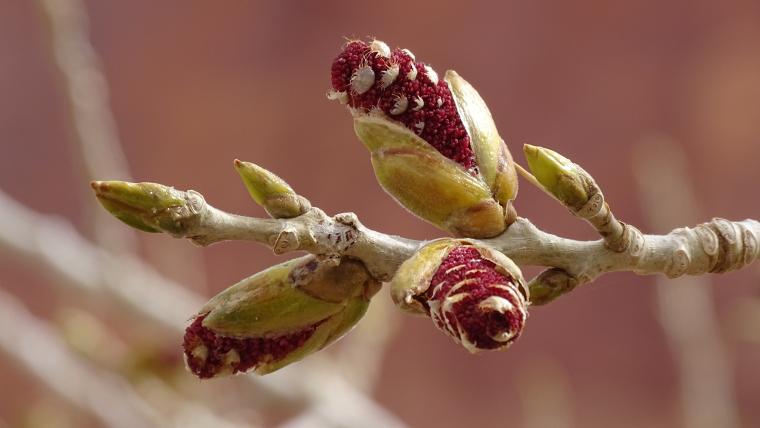
In a nutshell
While it’s the standard in animals for individuals to be either distinctly male or female, this condition, termed dioecy, is uncommon in plants, occurring in only about 5% of species. Dioecious plants are commonly wind-pollinated, relying on air currents to transfer pollen from male individuals to the flowers on female trees. Ash, mulberry, willow, poplar, and some maples frequently demonstrate this strategy.
Because dioecy is uncommon, our understanding of how dioecious species are responding to changing climate conditions is more limited than for other plants. Dioecy intersects with phenology in two important ways. First, to successfully reproduce, male and female plants must flower at the same time. And second, flowering should occur prior to the development of leaves, which can physically impede pollen reaching female flowers.
To address the gap in our understanding of climate change impacts on dioecious plants, a group of researchers based at Purdue University in Indiana, USA evaluated herbarium specimens and observations of leaf and flowering phenology contributed by Nature’s Notebook participants in eight Populus species to determine whether 1) the synchronicity in flowering in male and female trees is changing, and 2) the timing of leaf-out and flowering is changing at different rates.
The researchers found that as with many plants, activity occurring earlier in the season is more sensitive to springtime warmth. Because male trees tend to flower earlier than female trees, they are advancing their flowering time at a greater rate than female trees. This is potentially bad news for these species; this pattern could reduce pollen transfer from male to female trees and negatively impact reproductive success in these trees. The researchers also found that flowering, which occurs before leaf-out in the species evaluated in this study, is advancing more rapidly than leaf-out. This finding is good news; the increasing temporal gap between flowing and leaf-out means less interference for the transfer of pollen from male to female trees.
What is special about this study?
This study was made possible because of the contemporary observations of leaf-out and flowering contributed by the dedicated participants in Nature’s Notebook. This is yet another example of research that would not be possible without the rich data resource generously contributed by individuals across the U.S.
What does this mean for YOU?
A continued trend of decreasing synchronicity in male and female flowering, and consequent drops in reproductive success in these species, could eventually result in a decline in the abundance of these species on the landscape. Continued data collection will enable researchers to track this pattern and for planners and managers to adapt, as appropriate.
Citation: Xie, Y., H.T. Thammavong, L.G. Berry, C.H. Huang, D.S. Park. 2023. Sex-dependent phenological responses to climate vary across species’ ranges. Proceedings of the National Academy of Sciences of the United States of America. doi.org/10.1073/pnas.2306723120